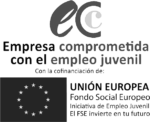There are deficiencies in the processes and outputs of the general education system. One of the theories to explain this situation is that there is a defective relationship between the world of training and the world of employment.
In this post we will address five deficits of the Spanish education systemThe main factors that explain this context are: the mediocrity of results in some of their different objective manifestations, the inefficiency of educational expenditure, the gap between training and employment, the slowness of the policy response, and the efficiencies of the regulatory frameworks.
The mediocrity of the results
The mediocrity of the results in the education system is a striking characteristic. When compared with the rest of the population, there are notable deficits that constitute a brake on the economic and social progress of our country.
Results are below the OECD average. Spain has made very little progress in Mathematics, and in Reading and Science the differences are not statistically significant.
In terms of excellence, measured by the percentage of students with a level of performance equal to or higher than 5, on a scale of 1 to 6, Spain occupies the 19th position in the ranking of 27 EU countries. Only 1.91 PT3T of our 15-year-old students are excellent (level 5 and 6) in more than one subject, compared to 3.71 PT3T for the EU average, 6.11 PT3T in Estonia and the Netherlands or 61 PT3T in Finland.
The differences are also affected by the different Autonomous Communities. In Reading, the Autonomous Regions with the highest scores are Navarre and Madrid; Andalusia and Extremadura come last respectively. In Mathematics, Navarre and Castile and Leon head the top, while Andalusia and the Canary Islands finish at the bottom. Finally, in Science, Castile and Leon and Madrid take the gold and silver medals, while Extremadura and Andalusia come last in this category.
Inefficient spending
The expenditure that a country invests in its education system and training is the quantitative expression in monetary units of all the material and human resources employed. In Spain, the public sector is the main investor in non-university education, with a share of 881 Tbp3T. Spain, with 121 Tbp3T of total expenditure, is the fourth country with the highest relative private effort in favour of non-university education, 5 percentage points above the EU-22. Spain is one of the European countries with the highest proportion of private expenditure coming directly from households.
The gap between training and employment
The gap between education and employment among young people is a relatively widespread phenomenon in developed countries. The EU has focused significant attention on this phenomenon and has incorporated it into the ET2020 Monitoring Monitor.
High levels of youth unemployment coexist with a shortage of qualifications and skills relevant to the labour market. This is called "Two crises, one paradox".
The slow policy response
One of the deficits of the Spanish education and training system lies in the enormous slowness of the political response to the demands of the context. This is despite the growing influence of the EU in defining educational policies, which is, however, limited by the characteristics of the Open Method of Coordination, a method which, as is well known, respects the sovereignty of the member states in educational matters, in application of the principle of subsidiarity.
Weaknesses in the regulatory framework
We compare the evolution of the extension of norms, of equal rank and purpose, and of their degree of detail in the successive education laws of this period, taking as a reference, for example, the General Education Law of 1970 which, as is well known, corresponds to an illiberal stage in Spanish history and, therefore, notably bureaucratised.
It is imperative to abandon the growing orderliness that, in the 21st century, is afflicting the education system Spanish. This regulatory approach establishes such an excessive straitjacket that it severely limits the reasonable freedom of education professionals, distrusts their competences, restricts their capacity for innovation and thus limits the progress that can be made simply by trial and error.





